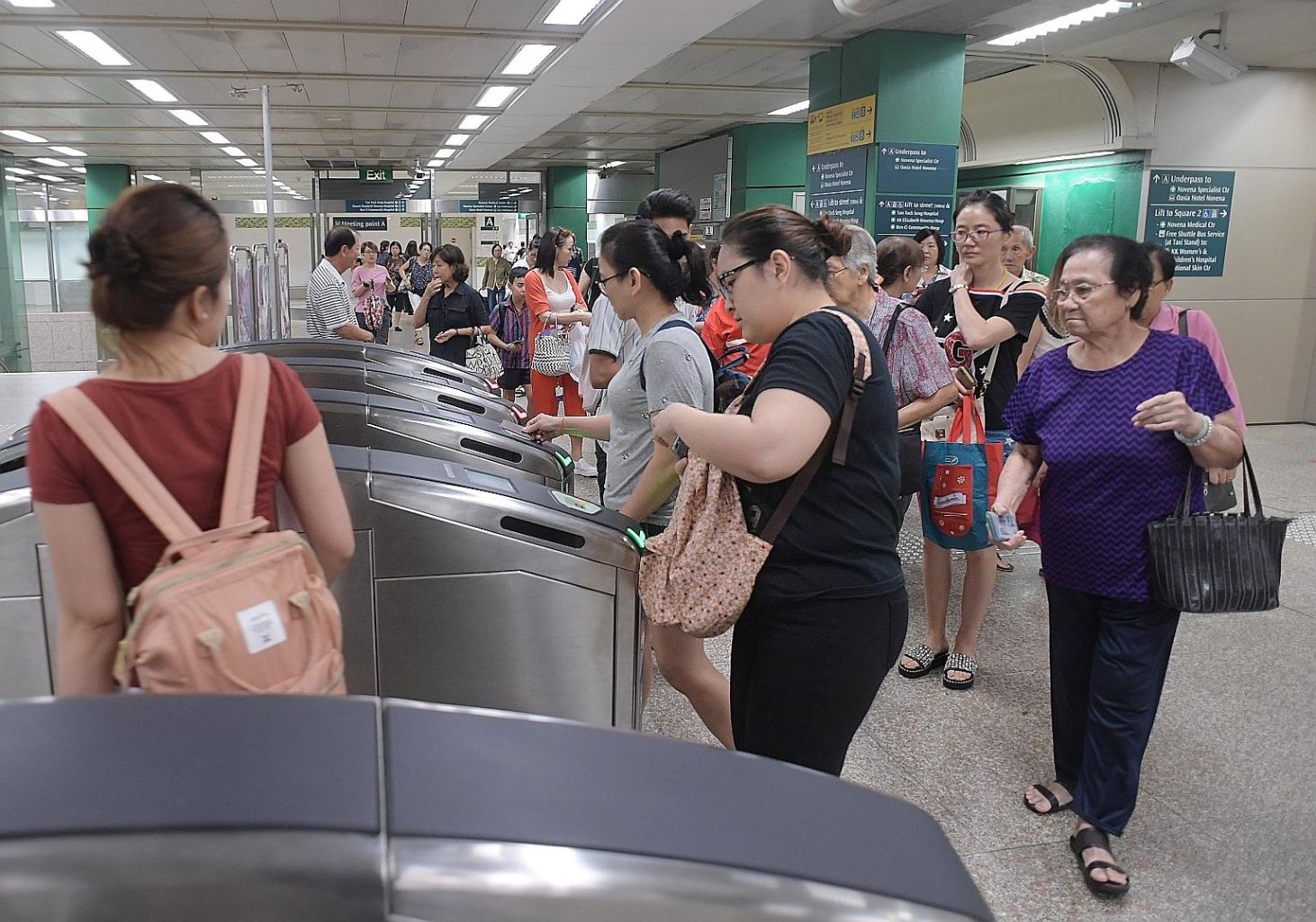More flexible journeys with change to rail transfer rules
Separate boarding charge to be axed for trips on same or different line within time limit
Sign up now: Get ST's newsletters delivered to your inbox

By the year end, commuters can avoid paying a separate boarding charge as long as they exit one MRT or LRT station and walk to another station on a separate or same line to continue their trip within 15 minutes.
ST PHOTO: ALPHONSUS CHERN
Adrian Lim
Follow topic:
Train commuters will have greater flexibility in their rail journeys by the end of the year.
A change in the distance-based transfer rules will allow commuters travelling on different MRT lines in a single trip, or those exiting and transferring to another station on the same line, to do so without being penalised with a separate boarding charge.
The Public Transport Council (PTC), in announcing this yesterday, said at least 6,000 daily journeys will see shorter travel times and lower fares with this change.
Commuters can avoid paying a separate boarding charge as long as they exit one MRT or LRT station and walk to another station on a separate or same line to continue their trip within 15 minutes.
Exiting and re-entering the same station, however, will still incur a new boarding charge. There is a boarding charge of 77 cents for tapping in and out of any station, even without any travel.
"With more rail lines opening in the coming years, there will be more instances where commuters may save time by using a combination of rail rides to reach their destination," said the PTC, which also announced changes to the fare formula yesterday.
There are currently 18 pairs of train stations that are within 1km of each other, and this figure is expected to increase as the rail network becomes more dense.
The change to transfer rules will, for example, benefit commuters on the Downtown Line, which runs from north-western Singapore, makes a loop in the downtown city centre, then traverses eastwards.
-
2018-2022 FARE FORMULA
The core consumer price index component, which measures the change in inflation rate over the previous year, increased from a factor of 0.4 to 0.5
The wage index, which measures the change in average wage over the preceding year, remained unchanged at a factor of 0.4
The energy index, which reflects changes in fuel and electricity costs, decreased from 0.2 to 0.1
The productivity extraction factor, which allows any productivity gain on the part of transport operators to be shared between operators and commuters, decreased from 0.5 per cent to 0.1 per cent
A new Network Capacity Factor component will be introduced. This compares the usage of the public transport network against capacity added.
A commuter travelling from Little India station to Bendemeer on the Downtown Line can make the 7km journey in 20 minutes for $1.16.
However, he may also travel from Little India to Rochor station, exit the system, walk to the nearby Jalan Besar station and continue the journey to Bendemeer. By doing so, he skips travelling the city loop.
This 1.8km rail trip will cur-rently incur a new boarding charge and cost $1.54, but with the change, it will cost only 77 cents. The estimated travel time is five minutes shorter.
The change to the transfer rules will take effect together with the annual public transport fare adjustment at the end of the year.
Mr Lee Yue Soo said the change would benefit his mother, who travels regularly from Bukit Panjang to Upper Changi station using the Downtown Line. Being able to bypass the Downtown Line city loop by walking from Rochor to Jalan Besar without paying the boarding charge would be beneficial for her, said the 41-year-old engineer.
"She can easily save 20 to 30 minutes by doing so. It is quite substantial," Mr Lee said.
• Additional reporting by Zhaki Abdullah

